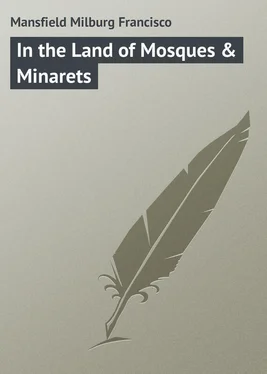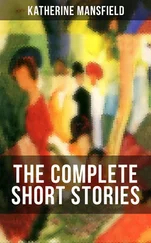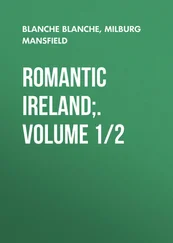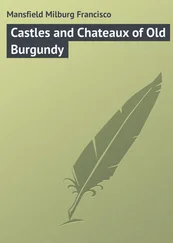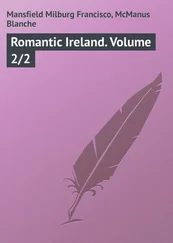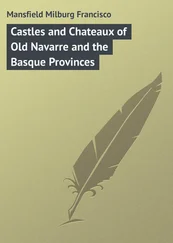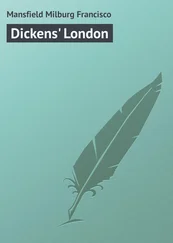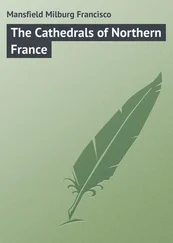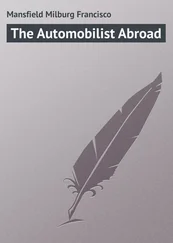Milburg Mansfield - In the Land of Mosques & Minarets
Здесь есть возможность читать онлайн «Milburg Mansfield - In the Land of Mosques & Minarets» — ознакомительный отрывок электронной книги совершенно бесплатно, а после прочтения отрывка купить полную версию. В некоторых случаях можно слушать аудио, скачать через торрент в формате fb2 и присутствует краткое содержание. ISBN: , Жанр: foreign_prose, Путешествия и география, на английском языке. Описание произведения, (предисловие) а так же отзывы посетителей доступны на портале библиотеки ЛибКат.
- Название:In the Land of Mosques & Minarets
- Автор:
- Жанр:
- Год:неизвестен
- ISBN:http://www.gutenberg.org/ebooks/46705
- Рейтинг книги:5 / 5. Голосов: 1
-
Избранное:Добавить в избранное
- Отзывы:
-
Ваша оценка:
- 100
- 1
- 2
- 3
- 4
- 5
In the Land of Mosques & Minarets: краткое содержание, описание и аннотация
Предлагаем к чтению аннотацию, описание, краткое содержание или предисловие (зависит от того, что написал сам автор книги «In the Land of Mosques & Minarets»). Если вы не нашли необходимую информацию о книге — напишите в комментариях, мы постараемся отыскать её.
In the Land of Mosques & Minarets — читать онлайн ознакомительный отрывок
Ниже представлен текст книги, разбитый по страницам. Система сохранения места последней прочитанной страницы, позволяет с удобством читать онлайн бесплатно книгу «In the Land of Mosques & Minarets», без необходимости каждый раз заново искать на чём Вы остановились. Поставьте закладку, и сможете в любой момент перейти на страницу, на которой закончили чтение.
Интервал:
Закладка:
In Tunisia, the roads are as good as they are in Algeria, and they are many and being added to yearly.
There are still to be seen, in the interior, little pyramids of stones, perhaps made up of tens of thousands, or a hundred thousand even, of desert pebbles, each unit placed by some devoted traveller who has recalled that on that spot occurred the death, or perhaps murder, of some pioneer. The Arabs call these monuments Nza, and would not think for a moment of passing one by without making their offering. It is a delicate, natural expression of sentiment, and one that might well be imitated.
There is no more danger to the tourist travelling through Algeria and Tunisia by road than there would be in France or Italy – and considerably less than might be met with in Spain. There are some brigands and robbers left hiding in the mountains, perhaps, but their raids are on flocks and herds, and not for the mere dross of the gold of tourists, or the gasolene of automobilists. The desert lion is a myth of Tartarinesque poets and artists, and one is not likely to meet anything more savage than a rabbit or a hedgehog all the fifteen hundred or two thousand kilometres from Tlemcen to Gabès.
The African lion is a dweller only in the forest-grown mountains; and the popular belief that it can track for weeks across the desert, drinking only air, and eating only sand, is pure folly of the romantic brand perpetuated by the painter Gérome.
During the last ten years, in all Algeria there were killed only: —
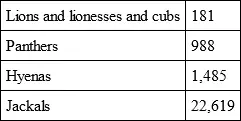
It may be taken for granted, then, that there are no great dangers to be experienced on the well-worn roads and pistes of Tunisia and Algeria. The hyenas and lions are hidden away in the great mountain fastnesses, and the jackals themselves are harmless enough so far as human beings are concerned. The sanglier , or wild boar, is savage enough if attacked when met with, otherwise it is he who flees, whilst the jack-rabbits and the gazelles make up the majority of the “savage life” seen contiguous to the main travelled roads away from the railways.
Scorpions and horned vipers are everywhere – if one looks for them, otherwise one scarcely ever sees one or the other. The greatest enemy of mankind hereabouts is the flea; and, as the remedy is an obvious and personal one, no more need be said. Another plague is the cricket, grasshopper or sauterelle . The sauterelle , says the Arab, is the wonder among nature’s living things. It has the face of a horse, the eyes of an elephant, the neck of a bull, the horns of a deer, the breast of a lion, the stomach of a scorpion, the legs of an ostrich, the tail of a snake, and is more to be feared than any of the before enumerated menagerie. It all but devastated the chief wheat-growing lands of the plateaux of the provinces of Alger and Constantine a generation or more ago, and brought great misery in its wake.
The scorpion and the gazelle are the two chief novelties among living things (after the camel) with which the stranger makes acquaintance here. The former is unlovely but not dangerous. “ Il pique, mais ne mord pas ,” say the French; but no one likes to find them in his shoes in the morning all the same. The gazelle is more likable, a gentle, endearing creature, with great liquid eyes, such as poets attribute to their most lovely feminine creations.
The gazelle is an attribute of all fountain courtyards. It lives and thrives in captivity, can be tamed to follow you like a dog, and is as affectionate as a caressing kitten. It will eat condensed milk, dates, cabbage and cigarettes; but it balks at Pear’s soap.
In the open country the nomad Arab or even the house-dweller that one meets by the roadside is an agreeable, willing person, and when he understands French (as he frequently does), he is quite as “useful” as would be his European prototype under similar conditions. The country Arab is courteous, for courtesy’s sake, moreover, and not for profit. This is not apt to be the case in the cities and towns.
The Arab speech of the ports and railway cities and towns is of the solicitous kind. One can’t learn anything here of phraseology that will be useful to him in the least and it’s bad French. “ Sidi mousi! Moi porter! Moi forsa besef! ” is nothing at all, though it is eloquent, and probably means that the gamin, old or young, wants to carry your baggage or call a cab. And for this you pay in Algiers and Tunis as you pay in London or Paris, but you are not blackmailed as you are in Alexandria or Cairo.
One may not rest two minutes on the terrace of any café in a large Algerian town without having an Arab, a Kabyle, or a Jewish ragamuffin come up and bawl at one incessantly, “ Ciri, ciri, ciri! ” If you have just left your hotel, your boots brilliant as jet from the best Algerian substitute for “Day & Martin’s Best,” it doesn’t matter in the least; they still cry, “ Ciri, ciri, ciri, m’siou! ” Sometimes it is, “ Ciri bien, m’siou! ” and sometimes “ Ciri, kif, kif la glace de Paris! ” But the object of their plaint is always the same. Finally, if you won’t let them dull the polish of your shine , they will cire their faces and demand “ quat’ sous ” from you because you witnessed the operation. Very businesslike are the shoeblacks of Algiers; they don’t mind what they cire as long as they cire something.
The Café d’Apollon in Algiers is the rendezvous of the “high-life Arab.” Here Sheiks from the deserts’ great tents, Caïds from the settlements, and others of the vast army of great and small Arab officialdom assemble to take an afternoon bock or apéritif ; for in spite of his religion the Mussulman will sometimes drink beer and white wine. Some, too, are “decorated,” and some wear even the ruban or bouton of the Legion of Honour on their chests where that otherwise useless buttonhole of the coat of civilization would be. Grim, taciturn figures are these, whose only exclamation is a mechanical clacking of the lips or a cynical, gurgling chuckle coming from deep down, expressive of much or little, according as much or little is meant.
The foreign population in Algeria and Tunisia is very mixed; and though all nationalities mingle in trade the foreigners will not become naturalized to any great extent. Out of forty-one naturalized foreigners in Tunis in 1891, 27 were Italians, 2 Alsatians, 2 Luxembourgeois, 2 Maltese, 1 German, 1 Belgian, 1 Moroccan, and 5 individuals of undetermined nationality.
Civilization and progress has marked North Africa for exploitation, but it will never overturn Mohammedanism. The trail of Islam is a long one and plainly marked. From the Moghreb to the Levant and beyond extends the memory and tradition of Moorish civilization of days long gone by. The field is unlimited, and ranges from the Giralda of Andalusia to the Ottoman mosques of the Dardanelles, though we may regret, with all the Arab poets and historians, the decadence of Granada more than all else. The Arab-Moorish overrunning of North Africa defined an epoch full of the incident of romance, whatever may have been the cruelties of the barbarians. This period endured until finally the sombre cities of the corsairs became the commercial capitals of to-day, just as glorious Carthage became a residential suburb of Tunis. The hand of time has left its mark plainly imprinted on all Mediterranean Africa, and not even the desire for up-to-dateness on the part of its exploiters will ever efface these memories, nor further desecrate the monuments which still remain.
Читать дальшеИнтервал:
Закладка:
Похожие книги на «In the Land of Mosques & Minarets»
Представляем Вашему вниманию похожие книги на «In the Land of Mosques & Minarets» списком для выбора. Мы отобрали схожую по названию и смыслу литературу в надежде предоставить читателям больше вариантов отыскать новые, интересные, ещё непрочитанные произведения.
Обсуждение, отзывы о книге «In the Land of Mosques & Minarets» и просто собственные мнения читателей. Оставьте ваши комментарии, напишите, что Вы думаете о произведении, его смысле или главных героях. Укажите что конкретно понравилось, а что нет, и почему Вы так считаете.
